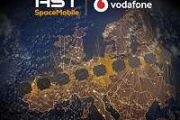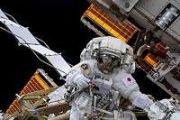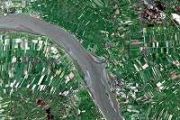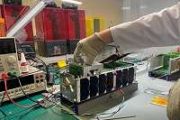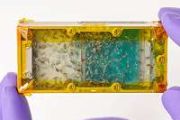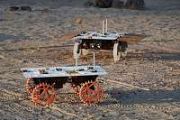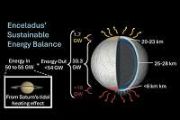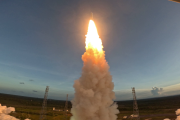
Copernical Team
Micrometeorite possibly behind Russian space capsule leak
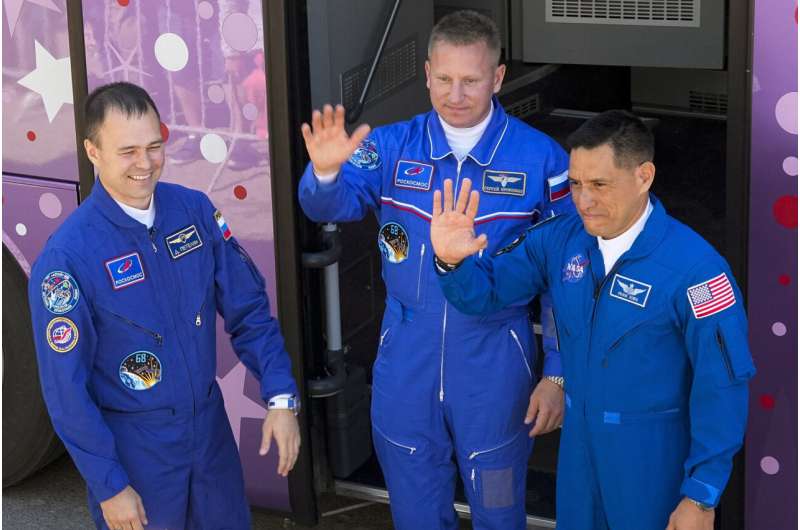
NASA Awards Contract to Maintain Webb Telescope Operations
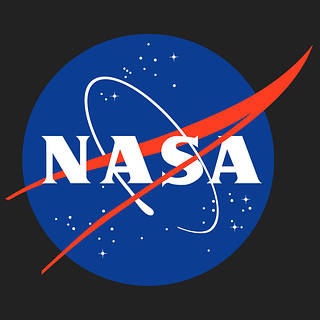 NASA has selected Northrop Grumman Systems Corporation of Redondo Beach, California, to support the James Webb Space Telescope Phase E – Operations and Sustainment contract.
NASA has selected Northrop Grumman Systems Corporation of Redondo Beach, California, to support the James Webb Space Telescope Phase E – Operations and Sustainment contract. Russian space capsule leak likely caused by micrometeorite

Healthier diets for astronauts on spaceflights may improve health and performance

Astronauts could be given an enhanced diet during spaceflights that includes a greater variety and quantity of fruits, vegetables, and fish to improve their health and performance compared to standard spaceflight food, reports a study published in Scientific Reports.
Although conducted in a spaceflight simulation chamber on Earth with 16 individuals, these findings may have implications for astronaut health and decisions about food resource priorities on spaceflights.
Long-duration spaceflight is known to impact human health, and spacecraft size and power constraints limit what can be taken into space. The food astronauts eat may have the potential to mitigate some negative health changes during spaceflight, but in turn the food can be limited by mass, volume, shelf-life, and storage requirements.
Mars' thin and turbulent atmosphere leads to curiously sized dunes
 Among the mountainous dunes and small, undulating ripples of Mars' desert-like surface are sand structures, intermediate in size, that are not quite like anything on Earth.
Stanford University scientists have now used an AI model to analyze a million Martian dunes and uncover how these sandy waves form on our sister planet at a scale - roughly 1 meter between crests - that previously seeme
Among the mountainous dunes and small, undulating ripples of Mars' desert-like surface are sand structures, intermediate in size, that are not quite like anything on Earth.
Stanford University scientists have now used an AI model to analyze a million Martian dunes and uncover how these sandy waves form on our sister planet at a scale - roughly 1 meter between crests - that previously seeme Government Solutions rebadges as SES Space and Defense
 SES Government Solutions (SES GS), a wholly-owned subsidiary of SES, will begin operating under the new name SES Space and Defense effective immediately. The name change comes after combining SES Government Solutions with the recently acquired DRS Global Enterprise Solutions (DRS GES). The SES Space and Defense brand reflects the organization's new positioning and expanded offering serving the n
SES Government Solutions (SES GS), a wholly-owned subsidiary of SES, will begin operating under the new name SES Space and Defense effective immediately. The name change comes after combining SES Government Solutions with the recently acquired DRS Global Enterprise Solutions (DRS GES). The SES Space and Defense brand reflects the organization's new positioning and expanded offering serving the n Chang'e 5 samples suggest exploitable water resources on the moon
 By studying lunar samples retrieved by the Chang'e 5 mission, Chinese scientists found that lunar soil grains retain more solar wind-implanted water at the middle latitude region than previously thought.
Based on this finding, the scientists predict that there is a large amount of water resources available for utilization at the high latitude region of the moon.
Scientists had previo
By studying lunar samples retrieved by the Chang'e 5 mission, Chinese scientists found that lunar soil grains retain more solar wind-implanted water at the middle latitude region than previously thought.
Based on this finding, the scientists predict that there is a large amount of water resources available for utilization at the high latitude region of the moon.
Scientists had previo Mitigating corrosion by liquid tin could lead to better cooling in fusion reactors
 Researchers at Tokyo Institute of Technology and the National Institute for Fusion Science have clarified the chemical compatibility between high temperature liquid metal tin (Sn) and reduced activation ferritic martensitic, a candidate structural material for fusion reactors. This discovery has paved the way for the development of a liquid metal tin divertor, which is an advanced heat-removal c
Researchers at Tokyo Institute of Technology and the National Institute for Fusion Science have clarified the chemical compatibility between high temperature liquid metal tin (Sn) and reduced activation ferritic martensitic, a candidate structural material for fusion reactors. This discovery has paved the way for the development of a liquid metal tin divertor, which is an advanced heat-removal c Northrop Grumman increases hypersonic manufacturing production capacity and affordability
 Northrop Grumman has received funding through the Manufacturing and Industrial Technology Division of the Air Force Research Laboratory (AFRL) for enhancements to its hypersonics manufacturing technology. The $8.8 million contract supports improvements that will help to shorten production times and drive affordability for hypersonic weapons in production.
"Increased manufacturing capacity
Northrop Grumman has received funding through the Manufacturing and Industrial Technology Division of the Air Force Research Laboratory (AFRL) for enhancements to its hypersonics manufacturing technology. The $8.8 million contract supports improvements that will help to shorten production times and drive affordability for hypersonic weapons in production.
"Increased manufacturing capacity Microsoft and Viasat form partnership to deliver internet to the underserved globally
 On Wednesday, Microsoft Corp. (NASDAQ: MSFT) and Viasat (NASDAQ: VSAT) announced a new partnership to help deliver internet access to 10 million people around the globe, including 5 million across Africa.
Viasat, a global communications company, is the first satellite partner to work with Microsoft's Airband Initiative, and together they will deepen Airband's work in the Democratic Republi
On Wednesday, Microsoft Corp. (NASDAQ: MSFT) and Viasat (NASDAQ: VSAT) announced a new partnership to help deliver internet access to 10 million people around the globe, including 5 million across Africa.
Viasat, a global communications company, is the first satellite partner to work with Microsoft's Airband Initiative, and together they will deepen Airband's work in the Democratic Republi 




